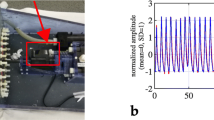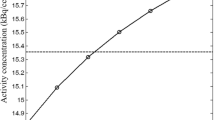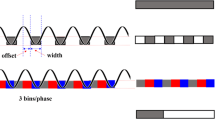Abstract
Purpose
Respiratory motion has been reported to be a potential cause of artefacts on PET/CT, and of errors in the quantification of lesion activity due to inaccurate attenuation correction. We examined FDG images corrected for attenuation with CT and a caesium external source in the same patients to study this artefact and to assess its impact on detection of lesions in the upper part of the liver.
Methods
A total of 122 patients underwent the examination using both attenuation correction techniques, with the Gemini PET/CT scanner. No breathing instructions were given. The images obtained were visually compared, and standardised uptake values (SUVs) in 35 lesions were measured (mean SUV/normal liver SUV) in 14 patients with lesions in the upper part of the liver (less than 5 cm from the upper border).
Results
CT-corrected images of the liver included an artefactual cold area in 84 patients (69%); this area was located in the posterior upper part of the liver (65 patients, 53%), included the top of the liver (ten patients, 8%) or affected both the top and the posterior part (nine patients, 8%). In lesions (and also in normal liver outside the artefactual area), SUVs obtained with CT correction were higher than those obtained with Cs correction (p<0.05), though this was usually without relevance for lesion detection. However, in patients with lesions situated inside the artefactual area, SUVs were lower with CT correction, and ability to detect two lesions (6%) was affected.
Conclusion
Failure to detect a liver lesion (especially in the superior and posterior parts) is a rare but possible pitfall when using only CT-corrected FDG images.


Similar content being viewed by others
References
Bockisch A, Beyer T, Antoch G, Freudenberg LS, Kuhl H, Debatin JE et al. Positron emission tomography/computed tomography—imaging protocols, artifacts, and pitfalls. Mol Imaging Biol 2004;6:188–99
Osman MM, Cohade C, Nakamoto Y, Marshall LT, Leal JP, Wahl RL. Clinically significant inaccurate localization of lesions with PET/CT: frequency in 300 patients. J Nucl Med 2003;44:240–3
Goerres GW, Kamel E, Seifert B, Burger C, Buck A, Hany TF et al. Accuracy of image coregistration of pulmonary lesions in patients with non-small cell lung cancer using an integrated PET/CT system. J Nucl Med 2002;43:1469–75
Cohade C, Osman M, Marshall LN, Wahl RN. PET-CT: accuracy of PET and CT spatial registration of lung lesions. Eur J Nucl Med Mol Imaging 2003;30:721–6
Sarikaya I, Yeung HW, Erdi Y, Larson SM. Respiratory artefact causing malpositioning of liver dome lesion in right lower lung. Clin Nucl Med 2003;28:943–4
Cook GJ, Wegner EA, Fogelman I. Pitfalls and artifacts in 18FDG PET and PET/CT oncologic imaging. Semin Nucl Med 2004;34:122–33
Nakamoto Y, Tatsumi M, Cohade C, Osman M, Marshall LT, Wahl RL. Accuracy of image fusion of normal upper abdominal organs visualized with PET/CT. Eur J Nucl Med Mol Imaging 2003;30:597–602
Goerres GW, Burger C, Kamel E, Seifert B, Kaim AH, Buck A et al. Respiration-induced attenuation artifact at PET/CT: technical considerations. Radiology 2003;226:906–10
Chin BB, Nakamoto Y, Kraitchman DL, Marshall L, Wahl R. PET-CT evaluation of 2-deoxy-2-[18F]fluoro-D-glucose myocardial uptake: effect of respiratory motion. Mol Imaging Biol 2003;5:57–64
Visvikis D, Costa DC, Croasdale I, Lonn AH, Bomanji J, Gacinovic S et al. CT-based attenuation correction in the calculation of semi-quantitative indices of [18F]FDG uptake in PET. Eur J Nucl Med Mol Imaging 2003;30:344–53
Osman MM, Cohade C, Nakamoto Y, Wahl RL. Respiratory motion artifacts on PET emission images obtained using CT attenuation correction on PET-CT. Eur J Nucl Med Mol Imaging 2003;30:603–6
Papathanassiou D, Liehn JC, Bourgeot B, Amir R, Marcus C. Cesium attenuation correction on the liver dome revealing hepatic lesion missed with computed tomography attenuation correction because of the respiratory motion artifact. Clin Nucl Med 2005;30:120–1
Cohade C, Wahl RL. Applications of positron emission tomography/computed tomography image fusion in clinical positron emission tomography—clinical use, interpretation methods, diagnostic improvements. Semin Nucl Med 2003;33:228–37
Beyer T, Antoch G, Muller S, Egelhof T, Freudenberg LS, Debatin J et al. Acquisition protocol considerations for combined PET/CT imaging. J Nucl Med 2004;45 Suppl 1:25–35S
PET/CT Image Artifacts. In: Czernin J, Dahlbom M, Ratib O, Schiepers C, editors. Atlas of PET/CT imaging in oncology. Berlin Heidelberg New York: Springer; 2004 p. 63–75
Goerres GW, Kamel E, Heidelberg TN, Schwitter MR, Burger C, von Schulthess GK. PET-CT image co-registration in the thorax: influence of respiration. Eur J Nucl Med Mol Imaging 2002;29:351–60
Beyer T, Antoch G, Blodgett T, Freudenberg LF, Akhurst T, Mueller S. Dual-modality PET/CT imaging: the effect of respiratory motion on combined image quality in clinical oncology. Eur J Nucl Med Mol Imaging 2003;30:588–96
De Juan R, Seifert B, Berthold T, von Schulthess GK, Goerres GW. Clinical evaluation of a breathing protocol for PET/CT. Eur Radiol 2004;14:1118–23
Nakamoto Y, Osman M, Cohade C, Marshall LT, Links JM, Kohlmyer S et al. PET/CT: comparison of quantitative tracer uptake between germanium and CT transmission attenuation-corrected images. J Nucl Med 2002;43:1137–43
Kamel E, Hany TF, Burger C, Treyer V, Lonn AH, von Schulthess GK et al. CT vs. 68Ge attenuation correction in a combined PET/CT system: evaluation of the effect of lowering the CT tube current. Eur J Nucl Med Mol Imaging 2002;29:346–50
Kinahan PE, Hasegawa BH, Beyer T. X-ray-based attenuation correction for positron emission tomography/computed tomography scanners. Semin Nucl Med 2003;33:166–79
Erdi YE, Nehmeh SA, Pan T, Pevsner A, Rosenzweig KE, Mageras G, et al. The CT motion quantitation of lung lesions and its impact on PET-measured SUVs. J Nucl Med 2004;45:1287–92
Nehmeh SA, Erdi YE, Pan T, Pevsner A, Rosenzweig KE, Yorke E et al. Four-dimensional (4D) PET/CT imaging of the thorax. Med Phys 2004;31:3179–86
Acknowledgements
The authors thank S. Baudet, C. Cossus, C. Marques, F. Nicolats and I. Patouillard for their valuable help in the acquisition and processing of the data used in the present study, and L. Gausachs for provision of information on the Gemini device.
Author information
Authors and Affiliations
Corresponding author
Rights and permissions
About this article
Cite this article
Papathanassiou, D., Becker, S., Amir, R. et al. Respiratory motion artefact in the liver dome on FDG PET/CT: comparison of attenuation correction with CT and a caesium external source. Eur J Nucl Med Mol Imaging 32, 1422–1428 (2005). https://doi.org/10.1007/s00259-005-1868-y
Received:
Accepted:
Published:
Issue Date:
DOI: https://doi.org/10.1007/s00259-005-1868-y




